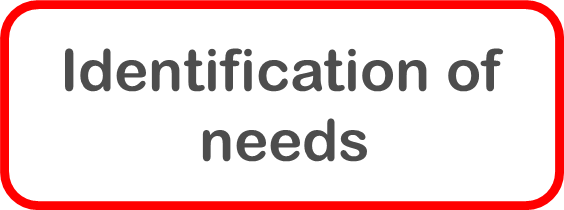Your new design will be uploaded in:
...
Please contact Delivery Team on
0113 3200 750 if you have any queries.
X
- About Us
- SEND REPORT
- Identification of needs
|
 |
|
|
The ‘SEND Code of Practice: 0-25 years’ (2014) states that there are four main areas included in Special Educational Needs and Disability. |
|
These 4 areas and their meaning are as follows:
|


|
 |


|
|
|
Communication
and
Interaction
|
 |
Children may have a delay or disorder in one or more of the following areas:
Attention / Interaction skills: Some children may:
• Have difficulties ignoring distractions.
• Need reminders to keep listening.
• Need regular prompts to stay on task.
• Need individualised motivation systems in order for them to complete tasks.
• Have difficulty attending in whole class sessions.
• Have problems interacting with other children or adults.
• Have peer relationship difficulties.
• Not be able to initiate or maintain a conversation
Understanding / Receptive Language: Some children may:
• Need visual support to understand or process spoken language.
• Need augmented communication systems like Makaton or the Picture Exchange System (PECS).
• Experience frequent misunderstandings with adults and other children.
• Repeat language they have heard without understanding it (echolalia).
• Need instructions repeated and language simplified to aid their understanding.
Speech / Expressive Language: Some children may:
• Use simplified language and limited vocabulary.
• Be unable to express their ideas or hold a conversation without the need for frequent clarification.
• Have some immaturities in their speech sound system.
• Have difficulties with grammar / phonological awareness which affects their achievements in literacy.
|
|
|

Cognition
and
Learning
|

|

Some children may have difficulties with the skills needed for effective learning such as:
• Language, memory and reasoning skills.
• Sequencing and organisational skills
• An understanding of number
• Problem-solving and concept development skills
• Fine and gross motor skills
• Global delay which affects their learning in all areas
• A specific learning disability such as dyslexia, dyscalculia, dyspraxia or dysgraphia
|
|
|

Social, Mental
and
Emotional health
|

|

Some children may have difficulties with social and emotional development which may lead to, or stem from;
• Social isolation.
• Behaviour difficulties.
• Attention difficulties (ADHD).
• Anxiety and depression.
• Attachment disorders.
• Low self-esteem.
• Issues with self-image.
|
|
|

Sensory and
/ or Physical
|
|

Some children may have medical or genetic conditions that lead to difficulties with:
• Gross / fine motor skills.
• Visual / hearing impairment.
• Accessing the curriculum without adaptation.
• Physically accessing the building(s) or equipment.
• Over sensitivity to noise / smells / light / touch / taste.
• Toileting / self-care.
|
|
|

|
|

|
|
|
 |
|











